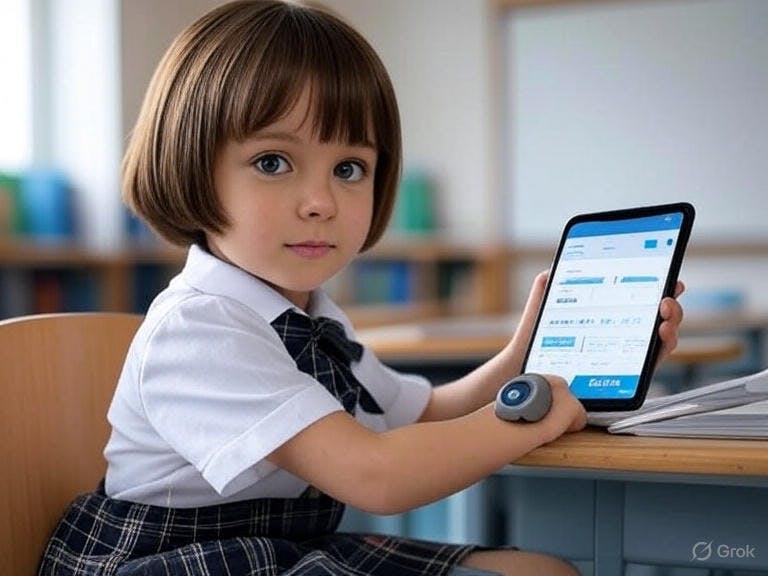Edge AI and IoT: Turning Real-Time Data into Safer Days for Patients

At Brikshyan, we are committed to exploring how cutting-edge technology can transform everyday care while safeguarding privacy and ensuring reliability. Our recent prototype demonstrates how Edge AI and IoT can be combined to deliver real-time, context-aware support for caregivers of children with insulin-dependent diabetes.
The Challenge: Coordinating Care Under Uncertainty
- Parents and teachers who care for children with diabetes face constant challenges. Critical decisions often need to be made quickly, by non-clinicians, and with limited context. A delayed or incorrect action — such as missing a low glucose level or mismanaging an insulin correction — can lead to serious health risks. Technology can help, but only if it:
- Respects privacy
- Minimizes latency
- Guides in clear, human terms
The Solution: An Edge-Native AI Agent
Our prototype introduces a local, edge-deployed system that integrates IoT sensors, smartphones, and cloud-based AI APIs to deliver actionable guidance:
A minimally invasive IoT sensor streams physiological data via Bluetooth to a smartphone.
- Insulin events are logged through NFC-enabled taps from the insulin pen.
- A Raspberry Pi acts as the secure edge gateway, applying deterministic safety rules, buffering data, and orchestrating alerts.
- When a threshold is met, the system calls cloud-based LLM APIs to generate role-specific messages for caregivers.
This approach ensures that safety-critical logic stays local, while AI enhances communication by summarizing complex telemetry into concise, role-aware alerts.
Key Architectural Principles
- Edge-first for latency and privacy: The Raspberry Pi handles ingestion, rule-based safety checks, and local buffering.
- LLMs for communication, not safety gating: Natural language outputs are powered by AI APIs, while deterministic rules remain the foundation for patient safety.
- Auditability and traceability: Every reading, log, and alert is recorded, enabling review and continuous improvement.
- Minimal cloud dependency: Cloud is used only for selective tasks like summarization and analytics; the default mode is local-first.
A Day in the Life: User Story
Consider Sofia, a four-year-old with diabetes at kindergarten. With parental consent, the school has temporary, role-limited access to the system:
- Sofia’s IoT sensor streams glucose data to her smartphone.
- Each insulin dose is logged automatically through NFC.
- Both data streams are sent to the Raspberry Pi, which applies real-time rules and tracks trends.
- When the system detects a rapid glucose drop, it generates an alert such as:
“Glucose falling rapidly (−3.4 mg/dL/min). Current 72 mg/dL. Insulin was given 24 minutes ago. Recommend 15 g fast-acting carbohydrate and recheck in 15 minutes.” - The teacher receives a clear, actionable SMS and dashboard update, while parents receive more detailed information for clinical follow-up.
This ensures that the right person, at the right time, gets guidance tailored to their role.
Why This Matters
- Safety & Latency: Local compute ensures fast, reliable alerts.
- Privacy & Control: Patient data remains local unless explicitly shared.
- Trust & Transparency: AI enhances communication but never overrides safety logic.
- Scalability & Affordability: Built on open-source frameworks like Nightscout and ThingsBoard, and deployable on a Raspberry Pi, this system is designed for real-world pilots.
Lessons Learned
- AI should support explainability and communication, not replace deterministic logic.
- Role-based outputs improve usability across parents, teachers, and clinicians.
- Comprehensive observability — logging every event — is vital for governance and improvement.
- Systems must be tested for resilience under degraded connectivity to ensure reliability in all conditions.
Looking Ahead
Potential future directions include:
- Role-aware escalation workflows for care teams
- Federated learning to improve protocols without centralizing patient data
- Integration with school health records and caregiver handover processes
Conclusion
This prototype shows how combining reliable IoT pipelines, edge computing, and modern AI APIs can ease the cognitive burden of everyday diabetes care. By focusing on safety, privacy, and explainability, we move closer to a future where technology empowers caregivers and protects patients in real time.